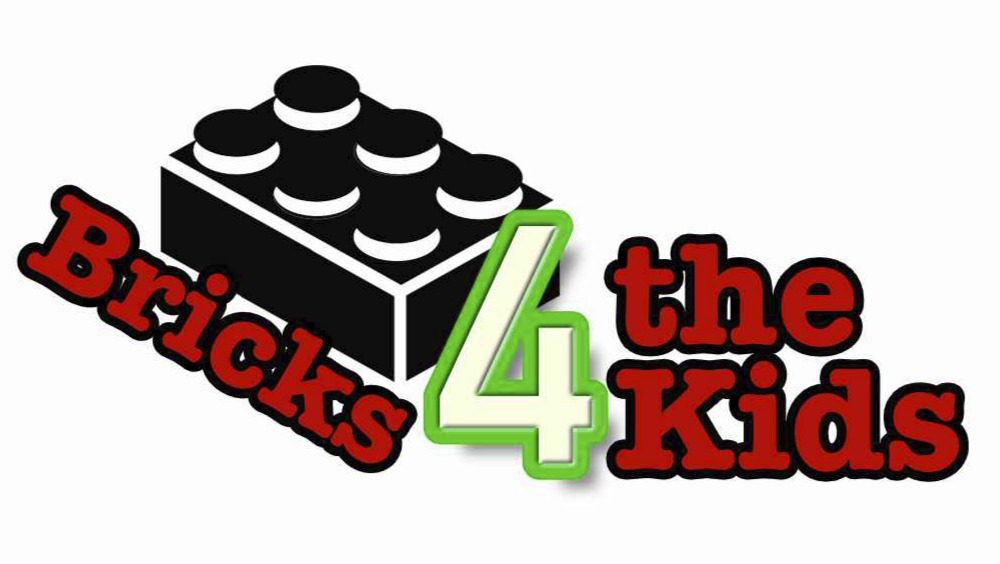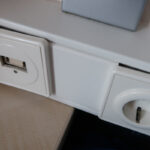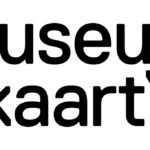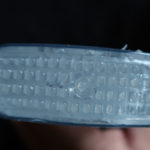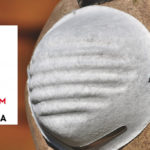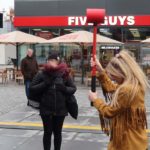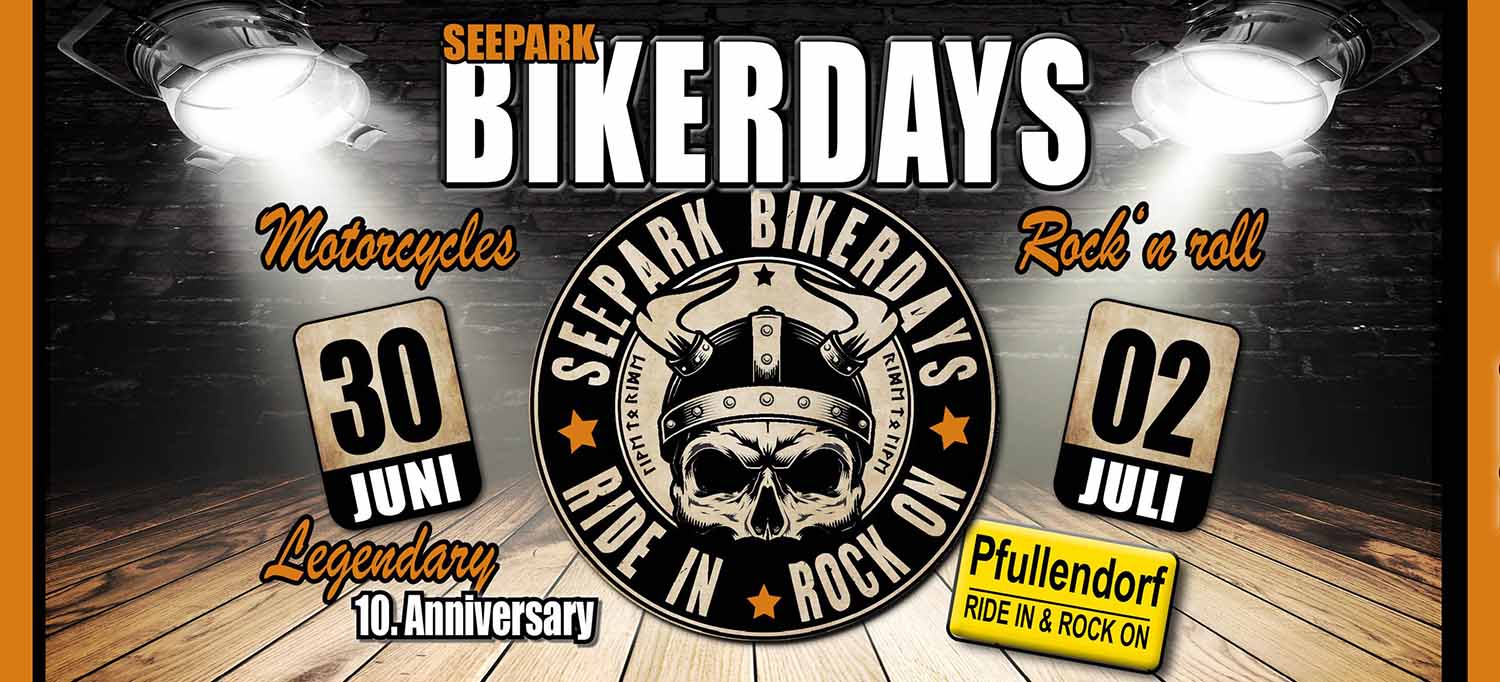Covid-19 has influenced our lifestyle in a historic way, indeed. A lot of things we did love to do are either limited or not possible at all. But that also means that life is changing and people look for other things they enjoy. Netflix and Disney Plus definitely increased their number of subscribers. Germans did a look of strolling through parks and the nature or went for a hike. And it has already been a time in which a product which many people associate with kids and toys grew massively in popularity over here: interlocking building bricks.
Interlocking Building Bricks – WHAT?
You might have never read the wording interlocking building bricks if you are an English native speaker. If you are German-speaking, the words Noppensteine or Klemmbausteine might sound very strange to you as well. If I name them LEGO® bricks, you quite surely know what I am talking about. You likely played with these ones when you were young. Me too. I loved it. And Covid-19 brought this hobby back to me – recognizing how many people out there share the same fascination about the bricks made from that special plastic called ABS, which creates sufficient friction so that the bricks stick together – until you separate them again.
However, if I call all interlocking building bricks LEGO® bricks, I will likely very soon receive an adhortory letter (German: Abmahnung) by lawyers working on behalf of the LEGO Juris A/S, who is holding all major rights on the bricks from Denmark (which are in fact also produced in other parts of Europe and China). In Germany, this is typically done by the Hogan Lovells chancellery. There is a small kind of trade war on the plastic bricks, which became that intense that I felt to share it with you.
If you do not dare to read a very lengthy posting, I at least ask you to read the very last paragraph and think about supporting Bricks 4 the Kids.
What is the mess all about?
In order to understand why you can have lawsuits on plastic bricks in Germany, you need to go back to the 1930’s. LEGO® has been founded by Ole Kirk Christiansen in Billund, Denmark, at that time and made wooden toys. In parallel, a British company called Kiddicraft already made plastic building bricks with knobs on top. LEGO took over the principle in the late 1940’s and struggled with the same issue the original bricks had as well: they just did not fix well. Christiansen had the genius idea to add tubes to the bottom of the bricks, which significantly increased the stability. The Danish held the patent from 1958 onward and became the market leader in toys. In 2019, LEGO was the best selling toy company in Germany with some 510 million Euro. They also lead the global toy market, closely followed by Hasbro (source).
The patent protection ran out in 1978. This opened the market for other companies to produce bricks linking in the same fraction way. However, LEGO® tried to keep the same monopoly position in the toy market, majorly by using trademarks, wordmarks and 3D brands. It took until 2009 when the Bundesgerichtshof, the highest German court, decided that the brick as such cannot be a brand, as it majorly a technical solution. This has been confirmed by the European Court of Justice some one year later.
However, LEGO® and its companies still hold a lot of brands, trademarks and protected design which make it very very hard for other companies to enter that market. Even though some lawyers believe you likely have a chance to cancel these rights, the corresponding lawsuits are lengthy and cost quite a bunch. You have to clearly state that especially in the mid 2010’s a couple of companies just copied full set designs and constructions by the Danish market leader, some even with a comparably low quality. The company Lepin is likely the most well-known among them. They simply did trademark piracy, which I absolutely do not support. The company is busted. The peers of the Danish have however grown a lot in the meantime and deliver independent designs and ideas.
What has happened in the recent past?
As said in the last section, a bunch of peer companies to LEGO® grew in the recent years in Germany. The brick building scene grew with the product. Most of the LEGO® products nowadays are rather aiming to be purchased by adults than by kids. These peer companies, who are typically called Alternative Klemmbaustein-Hersteller in German – “alternative interlocking bricks manufacturers”, closed a gap in the markets. The largest German peer is likely Bluebrixx, Apart from internet sale, they have about ten stores in Germany, in which they sell fully independently produced brick sets. The core topics are trains, cars, architecture – and the aim is rather to do scale modeling than playing with the objects. Even a comparably small car can be built of up to 500 stones in order to be detailed enough.
The Held – Part 1 (2019)
In the late 2010’s, the number of YouTube channels dealing with interlocking building bricks grew significantly in Germany. While LEGO® could so far control their market position quite well and even some legal action did not really draw attention, this changed when they sent an adhorty letter to Thomas Panke in Frankfurt in January 2019. Panke drives a building brick store in Frankfurt, which used to be a LEGO® only store. Panke reviewed LEGO® sets on YouTube and stated that he was more and more unhappy with the quality of the sets. The logo of his store and channel Held der Steine (“Hero of the Bricks”) had a building brick, which LEGO® felt that viewers will link to their company only and thus violates their mark rights.
Likely, the Held der Steine would have won a lawsuit easily. Instead, he changed his logo and published the letter in his YouTube channel. Due to his entertaining reviews, he had already been the largest channel on bricks – but the juristic action drew so much attention that the number of subscribers grew massively. This video only (see above) has been viewed over 2.2 million times. It was more or less that the beginning that Panke also focused on products from other companies. Panke became some sort of social media hero.
The Held and the Legostein (2021)
There have been a couple of lawsuits in between during these two years. Some of them might even just be caused that you might lose a trademark if you do not defend it, so you might not give too many negative credits to Denmark, when they for example became more aggressive with Bluebrixx. One of the key questions is whether you can use the word LEGOstein / LEGO® brick for products of other companies as well. It is a word mark and thus protected – but there have been word marks in the past which became a generic term / Gattungsbegriff. In German, you typically say Föhn when you refer to a hairdryer, to a Flex, you in fact mean a grinder or to a Tempo, when you mean a tissue. All are brands which became that popular that they are used in common language. Google, for example is currently fighting against being a generic term for using a search engine in the internet.
Due to some legal actions against befriended traders (Panke’s store is just opening very rarely nowadays), Panke provoked in his videos and started to call bricks from alternative companies LEGO bricks as well. It just took a few week until he again received an adhorty letter. He disclosed it in his entertaining kind of displaying it – and this time, the video became a real PR desaster for the Billund brick company.
The video has been shared and promoted on many platforms. Panke did delete and re-do the videos where he used the wording, but they were even straighter than the original ones. The disclosure video has been watched over 2.5 million times (and thus had ten times more viewers than the video he did before about a helicopter model), it topped the German YouTube trends and the topic was even discussed in German mass media. The building brick community more and more felt to move away from the market leader – even though, of course, they still have a very large and solid fan base in the country.
And then there was Q-Man vs. LEGO® (2021)
Another trader for building bricks is Thorsten Klahold, who is driving the Steingemachtes (“Made from Bricks”) store in Paderborn. He is majorly doing internet trade and is also driving a YouTube channel. In contrast to Panke, he concentrated on alternative companies from the very beginning. Nowadays, he is the the general importer for one company, Qman, in Germany. In contrast to Panke, who is entertaining, but also provocative, Klahold is very fair and analytic on his channel, Johnny’s World. He tries to present facts very neutral. In a video in which he compared the LEGO® and the Qman fire station, he said that there are also reasons to go for LEGO®. He is also trying to have a fair and friendly community among the German brick builders.
On 4th March 2021, he disclosed that German customs stopped a container full of Qman® bricks at Bremerhaven port and did a full inspection. His delivery has finally been stopped due to potential copyright violations. You have to say that Qman® (in contrast to most peers) is having a wide portfolio of bricks for children. Klahold, his company and Qman® has additionally been added to a list that defines him as generally suspicious to do these kind of frauds all over Europe. In the meantime, it has been confirmed that LEGO® / LEGO Juris A/S has actively claimed to stop the delivery.
Even among the Danish fan community, there is hardly any argument that Qman® does copyright frauds. In the video above, Klahold explains that these actions, adding him to the CIS list and delaying is delivery are very likely majorly done to simply prevent him from getting new merchandise from his store.Obviously and in contrast to just having a fair competition about the best quality and price, this feels to be the most convenient way to reduce the number of peers in the German and European brick markets. In addition, the same chancery is also trying to hector private people, who receive building bricks by mail order. The threats (up to three years imprisonment) presented in Klahold’s video above only apply to companies, not to private customers.
This is especially perfidious, as LEGO® themselves claim on their website that they want nothing but fair play to the competitors. I feel that they are absolutely right to sue companies like Lepin who just copied their products. Qman® (and many other companies), though, have individual designs, individual figures to play with etc. In my point of view, it is only an action to frighten competitors and to reduce their influence on the German market. You may also say that I feel that it is a desperate try to keep a monopoly – which just can’t be good for any customers in any branch.
Klahold’s video got viral – and of course, the Held der Steine also commented on it and supported him with a video one day after. Many minor and major YouTube channels and social media seem to be joining. On 6th March, both videos, the original by Klahold and the Held der Steine support, were in the Top 10 trends of YouTube in Germany. Again, a company felt to be skillful in using and abusing laws (which I feel are generally made for a very good reason) – but completely fail in their social media strategy. Flyctory.com is just a small blog, but I felt it is a nice way to share the story with you – thanks for reading to that point.
A very wise reply
In addition to explaining the situation to his community, Klahold founded a charity. By crowdfunding, he said that he and Qman® will collect money. If they made it to 30,000 Euro until the end of the campaign, they will buy a container full of alternative interlocking building bricks for the net cost price in China and bring them to Germany. The aim is to give them for free to children’s home, kindergartens and other kids in unfortunate positions.

This campaign is called Bricks 4 the Kids and it feels to become the real PR disaster for the market leader. The 30,000 Euro limit has been reached after some 15 hours, even before the Held der Steine activated his publicity on the project. Currently, it is not a charity, so that you cannot deduct your donation from your income tax, but they are thinking about founding one in a second step. At the time of writing this posting (which is less than two days after the video on Johnny’s World, more than 5,000 people have already given more than 160,000 Euro. At the time of publishing, some twelve hours later, it was about 215,000 EUR. In an update video on YouTube, Klahold stated that there are also some 16k Euro of donations by PayPal. It is a massive statement for a fair play market in the building bricks community.
Yes, you have to be fair that LEGO® could use the same action on these containers from China again – but it is hard to believe that they can dare to do so. The PR disaster would be massive and lead even more a focus on the situation. Of course, Flyctory.com already supported the project financially – if you like to join, just click on the logo below – thank you!
I am not a lawyer or a trained person. As all postings in my blog, the posting is reflecting my best possible understanding of the situation and my personal opinion. It is not a legal advice / Rechtsberatung or similar. LEGO, Qman, Steingemachtes and Held der Steine are registered trademarks.
Sorry that all videos in this posting are in German.
Flyctory.com on Social Media
Flyctory.com is active on the following social media platforms:
Furthermore, you can follow the weekly updated Country Music Playlists on
All “classic” blog posts
No reviews – just debating and certain topics – these are my “traditional” blog posts in the categories Just blogging, Just blogging on music and Sports Blogging:

At least I did not get any messages or other reactions about it - so I am not sure whether ...

I had the idea to this post when I sat in the American Airlines Admirals Club at Pittsburgh Airport (PIT), ...

Summer time is festival time. As there are more and more interesting shows coming up, I felt that it might ...

22 - a repdigit and thus a small anniversary in my Food I Had Onboard series. I have to admit that some ...

It calls itself The Ultimate Country Music Fan Experience and there is indeed likely no festival of that genre somewhere ...

After I shared my loyalty portfolio thoughts in March 2024 with you, it is time for an update. Especially the ...

Country To Country 2025 in Berlin is in the books. Three days and the kick-off Bluebird Cafe session are over ...

In exactly two weeks, on 6th March 2025, Country To Country (C2C) Berlin is kicking off with the The Bluebird ...

I recently forgot a name of a German country artist and had to google it. I started typically by looking ...

With my recent mileage run and the trip to the World Floorball Championship Qualifications in Italy, I had quite a ...

It all started in August 2019 - and it has become a key delivery of Flyctory.com since then. The Country ...

While quite a lot of traveling is ahead of me during the next weeks, November and December 2024 was rather ...

has come to an end - and my Best of posting is the one which is "traditionally" concluding the year. The ...

Time to look back to the Flyctory.com year of music, part 2. In my 30th December 2024 posting, I am ...

The first one of my Best of postings at the end of the year is always reserved for looking back to my ...

Like I did in 2023, I will kick off my looking back to the year 2024 with some travel facts ...

is coming to an end, and my series of year-end reviews are already in the making. I felt to do ...

Last Thursday has been a very special moment in the history of my blog Flyctory.com. I a sure most of ...

Exactly eight years ago, I flew SAS Scandinavian flight SK 626 from Dusseldorf (DUS) to Copenhagen (CPH). Not a really ...

While my 18th edition of the Food I Had Onboard just came with a limited number of trips rather widely ...

Another year, another time for Rock of Ages. Similar to the previous years, I disclose some of the international dates I ...

I did not have that much traveling during the last weeks - but as some major trips are ahead, I ...

After I already introduced you to the track events and the field events of the athletics meeting of the Heinz-Steyer-Stadion ...

After I did a review by sports of the 2020/21 Toyko Summer Olympic Games, I have been at the 2024 ...

I did this kind of posting for the 2018 Winter Olympic Games as well as for the 2020/21 Tokyo Summer ...

Oh, I traveled too much the last weeks again. Time for another Food I Had Onboard posting - this time also featuring ...

The highlight of my trip to the Infosys Hall of Fame Open 2024 was of course the Saturday evening ceremony ...

The big moment is coming closer. On Thursday, 18th July 2024, the three inductees into the International Tennis Hall of ...

A very special week lies ahead of me. On Saturday, I will fly over to Boston and drive on to ...

The same procedure as every year. The day when the NHL is releasing their match schedule for the upcoming season ...

I recently completed the 100th show of the musical Rock of Ages, while traveling to Munich for that reason. The musical ...

I had quite a lot of travel in recent times - so there is time for a new Food I Had ...

Wow, what an intense week. Flyctory.com felt like my former sports project, sport-live.net, the last ten days. So many match ...

The still rather cheap flight prices from Europe to New York City are tempting. However, if you book too early, ...

In a short amount of time small field floorball boosted from a hobby and youth version of the sports to ...

I'm back! After having skipped quite a few ones, due to physical and mental reasons, I am about to fly ...

Since a couple of years, I have a group of so-called Featured Artists - musicians, which are in a special ...

In my fifteenth edition of my Food I Had Onboard posting series, I have a quhttps://flyctory.com/tag/deutschebahn/ite nice range of flight and ...

At the time when I started writing this posting in early March 2024, Flyctory.com already featured reviews of over 320 ...

In early April 2023, I gave you an insight into my loyalty program strategy for 2023. The posting Thumbs up ...

France, Tunisia, Saudi Arabia and Malaysia - I am just coming back from a massive aviation trip, which is the ...

The seizure of operation by Everynoise.com made it necessary to reform my country music playlists. I already mentioned this one ...

Andreas Dorau is one of the artists I follow for the longest time in my life. In 1997, just when ...

Happy New Onbaord-Food Year! At least, there is one flight experience from 2024 in this posting already, a Lufthansa Business ...

Is it really New Year's Eve already again? The last day of the year? I am posting this one in ...

Yeah, I am still more of an album person. I feel that a long-play is still able to tell stories ...

It's time to look back to . After I shared my new format My Year in Travel with you the first time, ...

Let's try out something new: in addition to the Best of postings I present you at the end of the year, I ...

Unfortunately, I could not complete the Country Christmas Playlist this year due to technical issues. However, since the days become ...

When I wanted to work on 8th December 2023, preparing the base data for my two country music playlists, I ...

After my eleventh Food I Had Onboard posting majorly concentrated on two Lufthansa First Class legs between Frankfurt (FRA) and ...

And then, it were three. I already shared Christmas songs by country artists twice as a playlist. For the Flyctory.com ...

At the end of September, some miraculous things were happening on the Instagram accounts of the Country To Country Festivals ...

I felt it is a good time to publish my next episode of Food I Had Onboard in this week in ...

When Swiss International Air Line recently released the seat map of their new Airbus A350 fleet, a real advantage of ...

It is just mid-year 2023 and I already start working on my 2024 Rock of Ages International Tour list. I am sure ...

In the life of a sports fan, there are those days you simply remember. Great victories and upsets, huge disappointments, ...

Are we really in the double digits now? I am really happy about my "new" category Food I had Onboard. Also, ...

Even though I am German, I am not an overwhelming soccer (or, for major parts of the world: football) fan ...

I am surprised that it has never been there before, stated Jackson Dean, one of the four artists, who will ...

Home is where the heart is - I had the idea to this posting about my favorite cities of the ...

Last week, the NHL released their schedule for the 2023-24 season. This typically means a bunch of work to me, ...

After I gave you three postings about the music at the Seepark Biker Days 2023 in Pfullendorf already, it is ...

I am not a Harley rider and I will travel to Pfullendorf by rental car. But I am really looking ...

One more Food I had onboard until I have a full set of ten postings. Hope you also enjoy reading ...

This weekend will be a tough one, a very emotional one for me. After 52 shows with the British production ...

Iceland is definitely one of the countries I love to travel to most. The unique nature, a very interesting culture ...

Oops, I did it again. Just within about a month, I feel that I had a nice volume of flights, ...

I did a bit of an ESC week this week, featuring Guildo Horn's Guildo hat Euch lieb! in my Songs of the Week and ...

Eight days of traveling along the Icelandic Ring Road are done. The trip was just intense. My wife and I ...

Using public transport all over Germany for 49 Euro? Sounds like the perfect deal, especially if you are a visitor ...

I have to give in: the red carpet is not my favorite location. Nonetheless, I felt very thankful that after ...

A major part of optimizing your travel portfolio is to determine the loyalty program which suits best to you. Thereby, ...

The last legs of the 2023 Weird Al Yankovic European Tour, Rock of Ages shows, the Pittsburgh Penguins and many ...

Damn, it is already four years... And it is more than 2,750 postings since then. On 25th February 2018, I ...

Today is a very special day to me: Weird Al Yankovic is playing is first-ever concert in Germany tonight, at ...

Wow, it's already half a dozen of episodes. This time, I start my Food I Had Onboard posting with two ...

If you know me or follow my website, you also know that I might not be the biggest tennis fan ...

The last posting of the year - Best Ones 2022 is introducing you to my best experience last years (as ...

While the music market is more and more focusing on singles and even writes weird stories like Taylor Swift's "Top ...

Since I started working with Flyctory.com, I present you a list of my favorite songs at the end of every ...

I recently told you about my very different pandemic and post-pandemic (re)booking experience with different airlines. The level of service ...

March 2020 changed my life. Covid-19 temporarily took me quite a bunch of habits, which I felt to be essential ...

Just some ten days left until Christmas. Instead of my typical album preview, I this time go for a preview ...

Time for another episode of Food I had onboard. Between September and November 2022, I had some really interesting experiences, ...

I recently ran into a very interesting discussion of the German aviation travel channel Frequent Traveler TV. Lars Costen, the ...

The 7th November 2022 is one of these days I will hardly forget so quickly. In a Weird Al fan ...

Even though I haven't been overwhelmingly optimistic about success on the sports side of the Indian tennis team at the ...

After I rolled out the Country Christmas Playlist 2021 in late November that year, I am this time a bit ...

After I gave you an overview of 2022 European appearances of my favorite musical Rock of Ages, I felt to ...

Already the fourth edition of my Food I Had Onboard category. Even though my Covid-19 infection changed quite a lot of ...

Every year, some time in June or July, I am spending hours and hours looking into flight schedules, checking out ...

The Bergisch Coffee Table (Bergische Kaffeetafel) is a traditional meal, somewhere between a brunch and an afternoon tea. And: it ...

Early summer 2022. After the Covid-19 crisis feels to have come to a certain end, air travelers all over Europe ...

After my second posting about Food I Had Onboard in mid March 2022, I had a couple of interesting flight experiences ...

He was ready to make a few people happy. For one evening. Ready to be the star of a luxurious ...

After I got some quite nice feedback about my first Food I Had Onboard posting, I felt to continue this ...

I am quite sure I will never forget this 24th February 2022. Like I will know what I did on ...

The Winter Olympic Games 2022 are finished. I have to say, I am relieved. It may have been the two ...

Especially for tourists, Dubai rather means entertainment, luxury and posh shopping. Thus, having a boat ride in a swan-shaped pedal ...

Last week only, I had to cancel or rebook four trip due to Covid-19 related reasons. Three of them included ...

It is time for the final posting of the years, simply named The Best Ones 2021. After looking into my ...

2021 definitely lifted Flyctory.com to another level. The community is steadily increasing - days with less than 2,000 page hits ...

Year-end is the time to look back to all the stuff what happened to you. Ideally you rather remind the ...

Christmas is approaching really quick now. While I traditionally do a festive edition of my Country Music Picks, I also ...

Even though I do have a couple of airport reviews on Flyctory.com, I so far missed a lot of the ...

Okay, I give in. In the world of country music, Christmas starts in early September. That's when the first song ...

In October 2021, on a flight from Munich (MUC) to Keflavik Airport (KEF), I decided to go for a new ...

Summer feels to be over - Fall 2021 is coming. Finally, I had much more - and better - trips ...

This is a posting I am aiming to write since ages somehow. I visited so many hotels - not just ...

The Summer Olympic Games 2020 in Tokyo are over. Two weeks of intense sports coverage are lying behind us. Definitely ...

After the 2018 PyoengChang Olympic Winter Games, I already felt urged to do my very own medal count of the ...

Are you currently also fascinated (or disgusted) by the Olympic Games? This posting is about cool sports - even though ...

During the later phases of the Covid-19 lock-downs in Germany, I had the idea to that posting. Maybe just because ...

I studied maths. This almost certainly means that I am weird. Or, at least, that I tend to have weird ...

I got introduced to Smooth McGroove by a friend some half a year ago. At that time, the YouTube music ...

At first sight, this is rather a blog posting for people outside Germany. At the time of reading, German residents ...

During a dinner concert in June 2020 of a Cologne local band, Cat Ballou (who will be part of my selection), I ...

It started on 27th July 2018 with Talk of This Town by Catherine McGrath. Last weekend, I reached another milestone: with Immortal ...

If you are on a city trip, you likely fancy to buy a multi-attraction ticket. There are global companies like ...

I already introduced you to Feli, the German Girl in America, now Feli from Germany, in my Flyctory.com posting about her ...

I am back. After five days in the United Arab Emirates metropolis, I came back to Germany. My Covid-19 test ...

After praising my favorite songs of 2020 and the favorite albums and EPs in 2020, the final posting to do ...

292 Media Review postings - looking into new music (and a few other) releases was definitely some sort of core ...

2020 is about to come to an end - and the last three posting of the years re about to ...

The critics hated the movie - the cinemas loved it (as it really cashed in a bunch). As a sequel ...

Weird Al Yankovic is not only one of my most favorite artists, who I follow for some twenty years now ...

While I have a couple of "PCR professionals" in my circle of contacts, it took me until December 2020 until ...

In addition to the very personal new Songs of My Life category, I feel like having a bit more blogging contents on ...

Just about one month left until we are facing our very first socially distanced Christmas. Especially after hard times in ...

A typical scene at the bett1HULKS tennis tournament during the last two weeks at Cologne's LANXESSarena: Alexander Zverev (who swept ...

During the last years, October has been one of the big months for European country music fans: being already "traditional" ...

Starting Flyctory.com as a travel and sports blog some 30 months ago, I wouldn't have imagined at its beginning how ...

After Novak Djokovic won the Australian Open 2020, charts like the one by below by the German Data Journalist Felix ...

2020 is just halfway done - but if I was to choose a German person of the year, regardless whether ...

I was originally working on a posting about key challenges that Nashville and the country music industry will face in ...

I absolutely loved to follow Olivia Lane on social media and listen to her music after I happened to run ...

Country music rarely makes it to German media - especially the major US acts, which are typically rather unknown in ...

Many Germans did it - and I did it as well: travelling again. The Whitsun weekend was not only a ...

They did it: the German Women Soccer Bundesliga (Flyeralarm Frauen-Bundesliga) re-started a few days ago, on 29th May 2020. I ...

Covid-19 has a huge impact on the music industry. My home town Cologne's local country music heroes, Mrs. Greenbird, were ...

Saturday, 16th May 2020, 15:30 hrs German time. The point in time at which the German Soccer Bundesliga was intended ...

Kenny Foster, one of the Featured Artists of Flyctory.com and one of the most friendly people I met in the ...

A friend of mine recently asked me how the current Covid-19 situation is affecting myself personally and of course also ...

My Country Music Playlists on Amazon Music and Spotify are one of the most popular elements of the Flyctory.com music ...

Mlada Bolesav - a 44,000 people city in Czech Repiblic, some 65 kilometers Northeast of Prague. Though the city's history ...

Due to the late cancellation of the C2C festivals in London, Dublin and Glasgow and all the organizational trouble caused ...

While I am writing this blog posting, I am sitting in London. The C2C: Country to Country has been cancelled ...

My third and final issue of stories around the C2C in Berlin - time to finish the days of country ...

Saturday in Berlin is over. A lot of good music has been played on several stages - but some stories ...

The German Country Music Scene is having their highest holidays - The C2C in Berlin started on 6th March 2020 ...

While I so far made an semi-annual look back in time, the "Very Important Postings", I decided something with my ...

Due to my passion for Weird Al Yankovic, I know Jim "Kimo" West for a couple of years now. Kimo ...

I decided to split the "Best music" postings of 2019 into two parts: while I already published my personal Best ...

2019 has come to an end - and music has been one of the key topics of Flyctory.com in 2019 ...

You may have visited Flyctory.com the last days hoping to have some coverage of the Neuchatel World Floorball Championships this ...

I am constantly aiming to improve your user experience on the website. I always felt that drilling down the list ...

Usually, I am reviewing albums at the time of release. Luke Combs This One's For You has been released on 2nd ...

Leo Moracchioli sounds very Italian, but in fact, the metal musician and producer is Norwegian citiizen. Despite his Youtube has ...

Some ten weeks weeks ago, I added another feature to Flyctory.com: the Country Music Playlists on Amazon and Spotify allows ...

During the London Country Music Week, Country 2 Country traditionally presented the lineup for the festival. Every year, fans pray ...

Quite surprisingly, there seems to be a quite sudden competition about the promotion and management of country music concerts in ...

I try to improve Flyctory.com steadily and enlarge your visitor's experience. I felt that there is so much music on ...

After my posting in April, which was already speculating about a country music boom in Germany and Central Europe, a ...

June 2019, time for the third semiannual summary of the website. Quite a lot has changed and improved compared to ...

During the CMA Fest 2019 in Nashville, I did quite a lot of Meet & Greets. I just felt it ...

The beginning of June was a very flattering moment to me. After I got more and more into country music ...

CMA Fest 2019 was just massive to me. So many artists, so many new people - I was just overwhelmed! ...

Facebook, Instagram and all other kinds of internet sources nowadays allow you to (sometimes by chance) find, follow and support ...

The closer CMA Fest 2019 came, the more I became aware of all the side events, which are not happening ...

Country music in Germany has a hard standing. It is still not played in most radio stations - or declared ...

I have to admit that Germany is likely the largest music market, in which the amazing duet "Shallow" of Lady ...

The beginning of March 2019 was a country music powerhouse to me. The Country 2 Country (C2C) debut in Berlin, ...

The "Road to Neuchatel 2019" - as only the Swiss team is qualified for their home World Floorball Championships in ...

You have them on almost every flight. They are located in the seat in front you? The airlines try to ...

No floorball competition is changing that frequently like the Champions Cup. While previous season, six men and women teams each ...

Another six months have passed - the first full half year of Flyctory.com's existance. After I did the Very Important ...

As blogging on music became a quite frequent category at Flyctory.com, I felt to look back to 2018 and introduce ...

Similar to frequent flying, there is a straightforward option to become a status member in all major hotel chains: frequent ...

Though I am a huge opponent of the Davis Cup reformations becoming active in 2019, I have to give in ...

1st July 2018 - we start counting down the days to christmas already. In this posting I resume about what ...

With Miles & More, Lufthansa Group's widely used loyality programme, introducing the concept of Mileage Pooling to their program just ...

There have been so many discussions about Rio 2016. Not just about whether the country itself is able to stand ...

Tianjin, China. Tennis Davis Cup, one of my most beloved sports competitions. He was intended to be the hero, the ...

As you might have seen in the other blog entries, I have been attending Europe's major country music festival, the ...

I typically have some notes of the major currencies I am frequently using at home. I just feel it is ...

Yeah, I have to give in: as a German, you just hated when there has been a race with our ...

Some of you may ask: Why did I choose Wordpress for this site? First of all, my wife Sarah had ...

